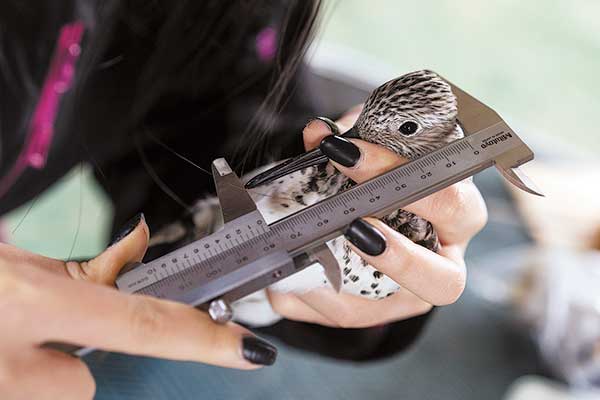

Established in 1998, the reserve has made great strides in enhancing the conservation of birds and the wetland ecosystem. The task has not been easy. One of the biggest challenges the reserve has faced is controlling cordgrass, an invasive alien plant.
According to Wu Wei, senior engineer at the reserve, cordgrass began expanding rapidly across the Dongtan mudflats in 2002. It chokes out the native plants on which birds depend for survival, posing a serious threat to the ecosystem.
Between 2012 and 2018, the reserve carried out a large-scale management project on invasive plant control and ecological restoration following a series of experiments and attempts. With measures such as the construction of ecological berms and the creation of bird habitats, it managed to exterminate over 95 percent of the cordgrass, which has led to the steady recovery of native plants like reeds and the sea bulrush.
"At the moment, we see that the results of the project have turned out quite well. Our bird monitoring results also show an obvious recovery and increase in the population of waterbirds here," Wu says.
One example that proves the success of the project is the notable rise in the population of tundra swans.
"The total population monitored in Dongtan in the 1990s was 3,000 to 3,500. In 2000, the species saw a sharp decline. The implementation of the project helped swans regain food and habitats, and we saw their population recover rapidly. We monitored nearly 3,000 tundra swans during the recent wintering season," Ma says, adding that many birds are choosing Dongtan as their summer breeding ground as its improved ecology provides an ideal habitat. This includes the Saunders's gull, a national first-class protected bird.
"Saunders's gulls used to breed on the Liaohe River estuary in northeastern China. But now we are monitoring around 100 of them breeding at the reserve every year. The overall population is estimated to be in excess of 10,000, up from 3,000 or 5,000 two decades ago," Ma adds.